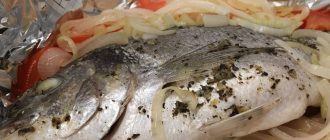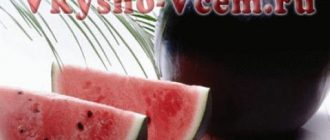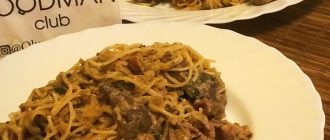
Korean cuisine is one of the most interesting national cuisines. It surprises us with its unusualness and commitment to the most ancient. traditions. Korean people are very sensitive to conservation of their culinary culture and protects it from foreign invasion elements.
The cuisine of this people is not only original, but also useful. For a large number of the most a variety of valuable ingredients. By the number of spicy dishes, this national cuisine is comparable to Japanese and Chinese cuisines. But in the rest are completely different culinary traditions.
Korean cuisine has not always been distinguished by a love of hot pepper. AT he came to this country thanks to the Portuguese in the 16th century and occupied a strong position, and is now associated with everyone inalienable an element of the traditional cuisine of this country. Thanks to him, this kitchen different characteristic orange-red color of dishes. Before the appearance red pepper here as the main spices used sesame, black pepper, ginger, onions and other additives. Together with hot peppers, Korean cuisine has been enriched with cultures such as tomatoes, cucumbers, potatoes, pumpkin, peanuts, which are now included most dishes of this country.

The secrets of the benefits of Korean dishes
A Korean dish like kimchi deserves special attention, since Koreans simply cannot imagine their existence without it. AT Korea, it is eaten by everyone and everywhere. This is the main side dish for meat and fish dishes like potatoes. Even a special version of this dish for astronauts. What is the secret of this dishes? The term kimchi first denoted pickled for long-term storage of vegetables. Then the pickles recipes got complicated and enriched with a large number of flavors.
There are countless options for kimchi today. In its composition there may be cabbage, cucumbers, beans, fern, soy meat, seafood and more. To the main ingredients is added. spicy marinade. Koreans procure this dish in such quantities that allocate an additional refrigerator for its storage. Among the most popular basics for kimchi the undisputed leader is Chinese cabbage.
In addition to a variety of flavors, kimchi has a rich content beneficial substances, vitamins, fiber, beneficial microorganisms. It is believed that addiction to this dish explains the lack of this nation has obesity problems.

In addition to kimchi, there are other health secrets of the inhabitants of this country. The cuisine of this country includes a huge variety of soups, which locals eat every day. A variety of soups are prepared here, these are light vegetable soups, seafood stews and hearty broths with meat. Koreans are also big noodle lovers. Her traditionally cooked for the holidays as a symbol of longevity. There are many recipes for Korean noodles. To the most solemn recipes include soup with buckwheat noodles and pheasant meat, which served at the court of the emperor.
In Korea, they love to cook thick soups in pots. Such soups reminiscent of stew, they put beans, vegetables, meat, fish, mushrooms. Korean soups are usually quite spicy. In cold weather such a dish warms, and tones in a hot. In korean cuisine there is also a dish similar to Russian jelly, it is cooked on a tight bone and offal broth.
As for cereals, rice is not so dominant position, both in Japan and China. Here its often add to other grains and beans. In a famous local dish Kongbap includes rice, barley, soy, beans and peas. It used to be cheap food for criminals, but now the dish is appreciated as an example a healthy diet containing a full range of nutrients. There are also many recipes for pure rice dishes in Korea. Of they cook noodles, pastries, bake in pots. Popularity enjoys rice wine and tea.

Koreans Favorite Products
Korean cuisine does not seem to us without soy products. Of popular soy sauce, milk, meat, tofu cheese and other things. Koreans also cook soybean seedlings. Beans are generally very A popular product in this country. In their dishes, locals use all kinds of beans, beans, soy. Such a variety is very popular. beans, like mung, which is different from the usual varieties for us legumes. Mung tastes good and cooks very quickly. To that But it is rich in vitamins and nutrients.
Beans in Korea are used to make almost any kind of food. Their pickle, add to soups and sausage, stew, eat as a side dish. The Korean transparent noodles we know are also made from beans.
The use of any kind of plant food is the main feature of Korean cuisine. It is used as grown here. vegetable crops such as Peking cabbage, potatoes, tomatoes, cucumbers and wild plants, edible. Koreans harvested in large quantities fern, young bamboo, lotus root. They then use all this for cooking delicious and varied dishes.

As for the attitude of Koreans towards meat and fish products, then here they are unpretentious in choosing. They eat almost any kind of animal protein. The only exception is beef, which for centuries has been banned by the religion of Buddhism and has not received recognition among the local population. In Korean dishes usually used pork and chicken. In cooking all parts of the carcass, including brains, kidneys, tails and other offal.
As for dog meat, it is not eaten here as often as we used to think. Sobachatina is a delicacy and it can afford only wealthy gourmets. Used in food only a special breed of dog – Nureong, bred in gastronomic purposes. Therefore, you can not be afraid that in Korean in the restaurant you will taste a dish from a dog instead of ordered pork. Dog meat is also used as a treatment funds and is considered able to strengthen the internal forces of the body and extend life.
There is much more exotic food in Korean cuisine than dog meat dishes. For example, sannakzhi – moving tentacles octopuses seasoned with flavors and sesame oil. Or Bondega – a dish that is prepared from mulberry larvae silkworms, gedjan (raw crabs), dakbal (chicken legs) and many other amazing and shocking European dishes.

Imperial cuisine
Besides the plentiful variety of simple so-called street food, Korea has its own haute cuisine, which was created for person of the imperial throne. In its sophistication, it is not inferior even the cuisine of France. Dishes related to imperial cuisine simple at first glance, but should have a perfectly harmonious taste and be healthy, as they were preparing for emperors and members of their families. Requirements for the selection of products for such a kitchen were very strict. The best products were delivered to the imperial palace from each locality of the country, therefore it was distinguished by a large a variety of people.
The dishes for the imperial breakfast were quite simple. They necessarily included boiled rice, as additives to which soy sauce, sesame oil, nuts, oysters, mushrooms were used. This breakfast was considered the most useful source of strength for further day. For lunch served several types of rice stewed vegetables, a meat dish, different types of kimchi, as well as more than a dozen various snacks. Favorite imperial dessert is called yaksik is glutinous rice with the addition of chestnuts, nuts, cinnamon, brown sugar and honey.
Korean Drinks
If we talk about the preferences of Koreans in alcoholic beverages, then they are quite peculiar. About a hundred are produced in this country. different types of alcohol, but almost all of them are so specific that seem strange to Europeans. For example, a rice drink McGoli is so thick that you can only use it with using a spoon. Previously, such a wine in Korea was poetically called a drink. pear color, as they did it during the flowering period of pear trees.

Korean spirits consumed for a traditional snack with hot pepper. For example, Korean vodka soju is simply not possible. to eat without appropriate food. And in combination with dishes, containing hot pepper, it reveals its original taste and it is easier to drink. Koreans also have light spirits. Raspberry wine, for example, is used as a traditional method potency improvement.
Among soft drinks in Korea, there are more than 200 types of fruit and herbal teas. Tea in this country is treated with great respect, as well as in China. They also cook here cereal teas, such as Korean rice tea.
How to serve food in Korean restaurants
Koreans are distinguished by an original way of serving dishes in their restaurant establishments, which is that guests can cook your own food. In the middle of each table is a gas tiles, and guests are served prepared and sliced raw products. This cooking process is interesting in that you can yourself control the degree of cooking and add any ingredients to your liking, and to keep food warm. Some dishes served almost ready, and guests only need to bring them to desired state.
Thus, the cuisine of this country amazes us with its variety and uniqueness. And although in modern Korea dishes from cuisines of other countries appear, she guards her traditions reliably. A snack like kimchi has long been a popular dish far beyond.








